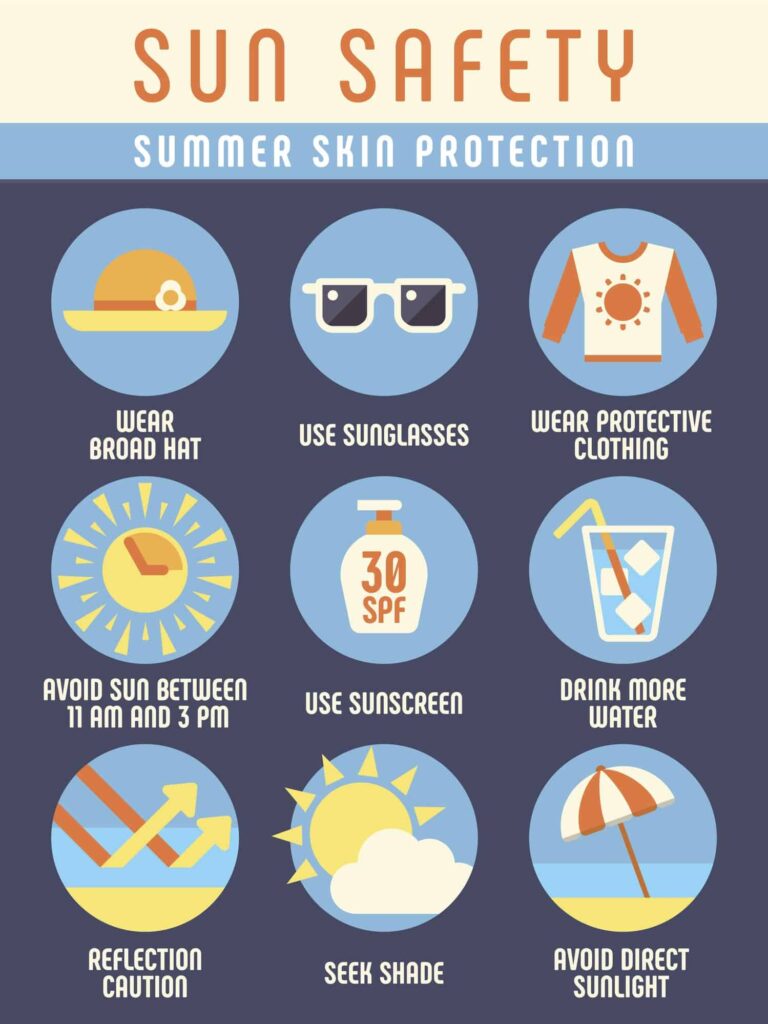
The sun is a vital source of vitamin D, but its rays can also be harmful. While many people seek the warmth and golden glow of a tan, it’s crucial to understand that tanning is actually your skin’s response to damage from ultraviolet (UV) radiation. This damage can lead to sunburn, premature aging, and even skin cancer.
This article will delve into the misconception surrounding umbrellas and UV protection, highlighting why seeking shade under an umbrella isn’t a reliable way to prevent sun damage. We’ll explore effective sun safety practices, including the importance of sunscreen, protective clothing, and seeking shade during peak hours.
Umbrellas and UV Protection
It’s a common belief that umbrellas provide adequate protection from the sun’s harmful rays. However, this is simply not true. While umbrellas offer excellent shade from direct sunlight, they do not effectively block UV radiation. The fabric of most umbrellas is designed to shield you from visible light, but it allows a significant amount of UV rays to pass through.
Think of it this way: an umbrella acts like a physical barrier against the sun’s heat and glare, but it doesn’t have the necessary density or material composition to filter out harmful UV radiation. If you’re relying on an umbrella for sun protection, you’re still exposing your skin to significant UV damage.
Sunburn Prevention
Sunburn is a painful reminder of excessive sun exposure. It occurs when your skin absorbs too much UV radiation, causing inflammation and redness. Severe sunburn can lead to blistering, peeling, and even fever. Preventing sunburn is crucial for protecting your skin’s health and reducing the risk of long-term damage.
The best way to prevent sunburn is to avoid prolonged sun exposure during peak hours (typically between 10 a.m. and 4 p.m.). When you are outdoors, make sure to wear protective clothing, seek shade whenever possible, and apply sunscreen liberally.
Sunscreen Importance
Sunscreen is your first line of defense against UV radiation. It contains chemicals that absorb or reflect UV rays, preventing them from reaching your skin. Choosing the right sunscreen is essential for effective protection.
Look for a broad-spectrum sunscreen with an SPF (Sun Protection Factor) of 30 or higher. Broad-spectrum protection means it shields against both UVA and UVB rays, which are responsible for sunburn and skin cancer. Apply sunscreen liberally to all exposed skin 15 minutes before going outside and reapply every two hours, or more frequently if you’re swimming or sweating.
Choosing the Right Sunscreen
There are different types of sunscreen available, including creams, lotions, sprays, and sticks. Choose a formula that suits your skin type and preferences. If you have sensitive skin, opt for a fragrance-free and hypoallergenic sunscreen.
Protective Clothing for Sun Safety
Wearing protective clothing can significantly reduce your exposure to UV radiation. Opt for lightweight, long-sleeved shirts and pants made from tightly woven fabrics.
Choose clothing that covers as much of your skin as possible, especially your arms, legs, neck, and face. A wide-brimmed hat can also provide shade for your face, ears, and neck.
Seeking Shade During Peak Hours
The sun’s rays are strongest between 10 a.m. and 4 p.m., so it’s essential to seek shade during these peak hours. Find areas with trees, umbrellas (for shade only, not UV protection), or buildings that offer natural cover.
Taking breaks in the shade can help prevent sunburn and reduce your overall exposure to harmful UV radiation.
Conclusion
While umbrellas provide welcome shade from the sun’s heat and glare, they do not effectively block UV rays. To protect your skin from sun damage, it’s crucial to adopt a comprehensive approach that includes wearing sunscreen with an SPF of 30 or higher, protective clothing, and seeking shade during peak hours. By following these sun safety tips, you can enjoy the outdoors while minimizing your risk of sunburn, premature aging, and skin cancer. Remember, protecting your skin is an investment in your long-term health and well-being.
